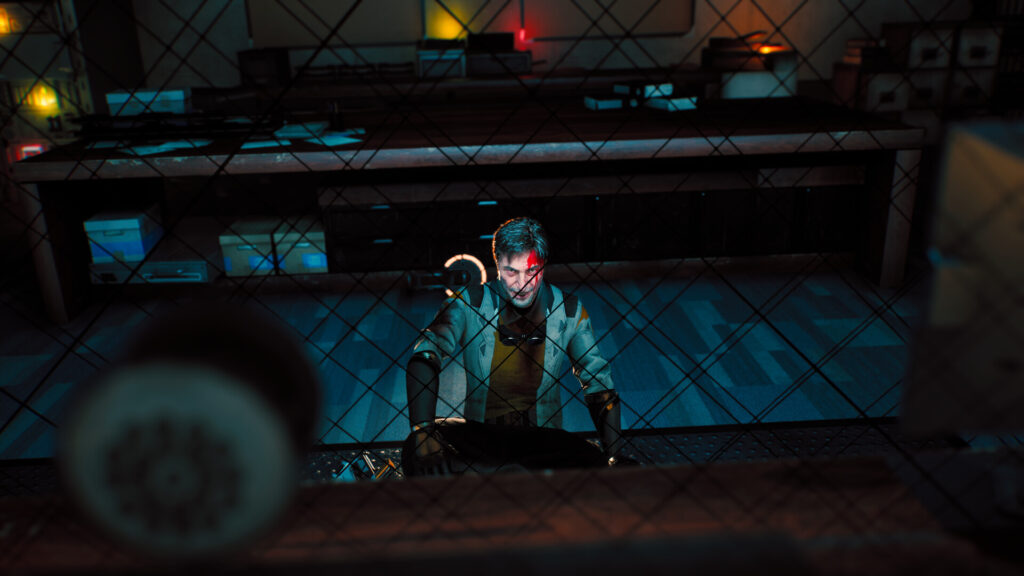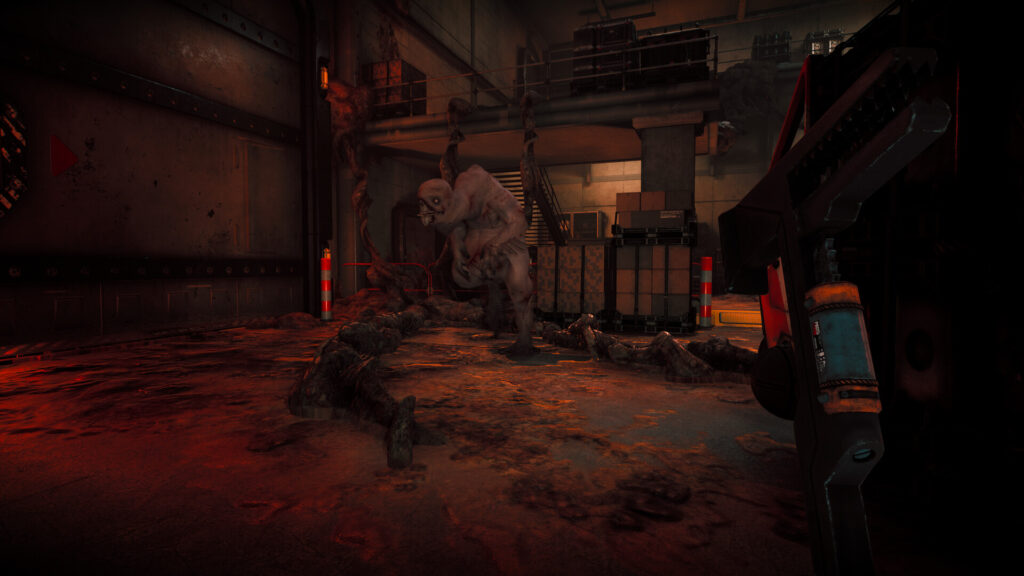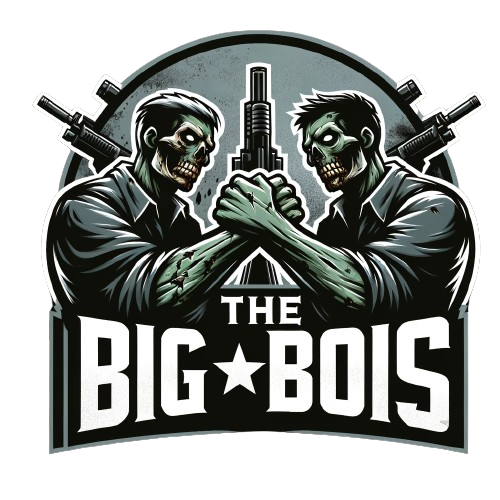SCP: Fragmented Minds is not just another indie horror title riding on the popularity of the SCP universe. It’s a surprisingly polished, narrative-driven sci-fi horror game that blends the best elements of Dead Space, Alien: Isolation, and SCP: Containment Breach, while carving out its own identity in the growing catalog of SCP-based media. Developed as a chapter-based release, the first entry sets the tone with tight visuals, immersive world-building, and a disturbing glimpse into a Martian facility gone completely to hell.
While still in its early stages—with only Chapter One currently available—Fragmented Minds already establishes itself as one of the most ambitious SCP games to date.
Welcome to Site 113 – Mars Has Gone Silent
You play as Kovich (or Jaden, depending on narrative alignment), a Mobile Task Force (MTF) soldier who awakens from cryo-sleep in a wrecked pod inside Site 113—a sprawling SCP Foundation facility buried beneath the Martian surface. You’re alone, disoriented, and something has clearly gone catastrophically wrong.
The setting itself is a brilliant move. Taking the usually Earth-bound SCP Foundation to Mars is not only refreshing, it opens up thematic room for isolation, existential dread, and the unknown—all classic sci-fi horror ingredients. And Fragmented Minds delivers on every front: busted corridors, flickering lights, abandoned labs, and blood-streaked terminals all work together to build a sense of unease that rarely lets up.

Gameplay: Tension Through Tools and Tactics
At its core, Fragmented Minds is a first-person adventure blending exploration, stealth, light combat, and puzzle-solving. You’re not a space marine with an arsenal—you’re equipped with survival gear, and for a large portion of the chapter, your best friend is a wrench.
Eventually, you get your hands on “Sarah,” a modular energy weapon that functions as a door opener, hacking tool, and non-lethal enemy disabler. It’s clever, multifunctional, and emblematic of the game’s design approach: tools that feel integrated into the world, not just tacked-on mechanics.
Other mechanics include:
- Stealth segments, where players must sneak past roaming anomalies.
- Environmental puzzles, often involving circuit rerouting or object interaction.
- Audio logs and data terminals, which reveal story breadcrumbs.
- Light crafting/inventory management, although this system feels underused at this stage.
Combat is sparse, and that’s a good thing. You’re not meant to fight your way through Site 113—you’re meant to survive it.
SCP Fan Service – With Room to Grow
The developers clearly respect the SCP Foundation’s deep, community-driven lore. While Chapter One doesn’t bombard you with dozens of anomalies, what it does include is handled with care.
The main threat comes from SCP-3199—mutated, chicken-like horrors that start creepy but lose some menace after repeated encounters. There are also possible nods to SCP-610 (“The Flesh That Hates”) and SCP-682, hinted at through environmental design and terminal logs. Foundation factions like the Church of the Broken God even get a subtle nod.
This isn’t a cameo-fest, but a focused story grounded in SCP tone. That said, the limited enemy variety is currently one of the game’s weakest points. For a universe as rich as the SCP mythos, fans will likely expect more diverse and memorable threats in future chapters.

Cinematic Presentation on an Indie Budget
Visually, Fragmented Minds punches well above its weight. The lighting design is moody and purposeful, shadows stretch menacingly across abandoned control rooms, and small visual flourishes—like lens flares, fog, and electrical flickers—add layers of immersion. The first-person animations, including how you use your flashlight or raise Sarah, feel fluid and grounded.
Voice acting is another standout. The characters you encounter (either through audio logs or in-game cutscenes) are well-performed, lending emotional weight and character to what could’ve easily been a sterile military operation.
And then there’s the soundtrack—atmospheric, tense, and appropriately minimalist. It never oversells the horror but subtly builds tension, making each hallway and encounter feel like a potential disaster waiting to happen.
Narrative, Themes, and the Human Element
Though grounded in sci-fi horror, Fragmented Minds doesn’t forget the human side of its story. Through audio logs, scattered personal effects, and the dialogue of Kovich/Jaden, the game explores themes of isolation, betrayal, and the moral cost of containment.
One standout moment involves a boss fight with a grotesque mutated entity dubbed “Big Mama,” a sequence that delivers not just in combat tension but emotional stakes. It’s a payoff that shows the game isn’t afraid to go beyond surface-level scares.
The slow drip of lore about “Yara” (a cryptic figure possibly tied to anomalous powers or a major twist in the story) also hints at deeper narrative arcs to come.

What Works – Strengths of Fragmented Minds
✔ Immersive Atmosphere – From the moment you wake in cryo-sleep, the tone is oppressive and compelling.
✔ Solid Visuals and Audio Design – Great lighting, strong voice acting, and cinematic flair set it apart from typical indie horror.
✔ Engaging World-Building – SCP references, logs, and faction lore make the setting feel lived-in and credible.
✔ Smart Use of Tools – Sarah, the multi-function device, is a standout gameplay feature.
✔ Emotional Storytelling – Character-driven moments and subtle moral questions keep the narrative compelling.
✔ Replayable and Affordable – With a $10 price point and more chapters coming, it’s a great entry investment for fans.
What Falls Short – Areas for Improvement
❌ Limited Enemy Variety – The mutated chicken creatures lose impact over time. More SCP anomalies are sorely needed.
❌ Performance Hiccups – Occasional framerate drops and UI stutters break immersion.
❌ Pacing Issues – Some sections overstay their welcome, especially when backtracking.
❌ No Map or Clear Navigation – Without objective markers, getting lost is easy and sometimes frustrating.
❌ Crafting Feels Tacked-On – The system is shallow for now, with few meaningful recipes or inventory decisions.
SCP: Fragmented Minds: SCP: Fragmented Minds doesn’t try to do everything at once—and that’s to its benefit. Instead of throwing in every SCP it can name-drop, it focuses on telling a tight, atmospheric, and character-driven horror story. The Mars setting, strong presentation, and clever gameplay elements like the Sarah tool and stealth sequences give it an identity that stands out in a crowded indie horror space. There’s room to grow. Future chapters need to expand enemy variety, flesh out underused systems, and offer more iconic SCPs. But for now, Fragmented Minds is a must-play for SCP fans, sci-fi horror lovers, or anyone looking for a tense, lore-rich adventure. – Obsidian


